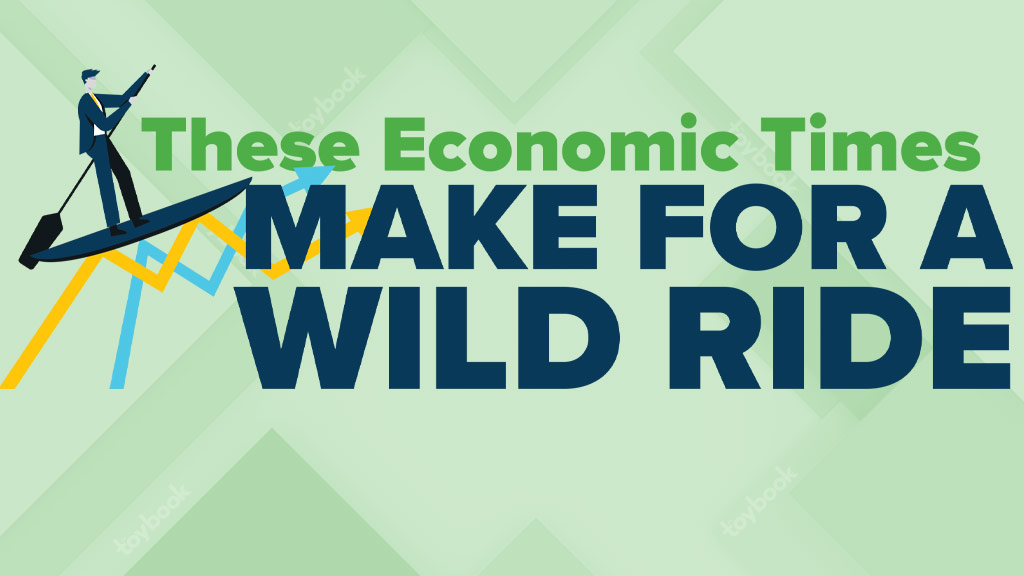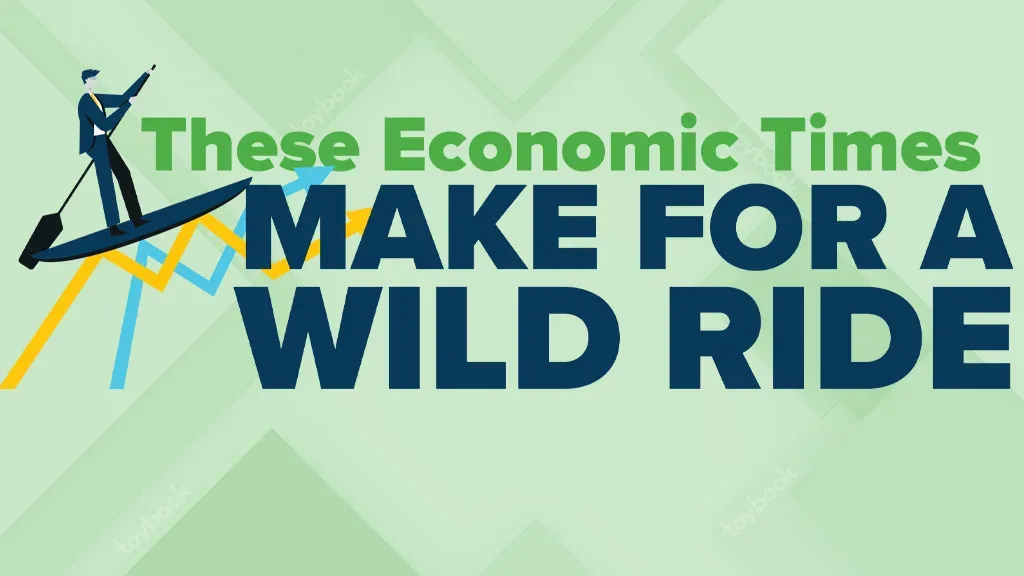
by STEPHANIE WISSINK, managing director, Jefferies
Years ago, I had a personal trainer who introduced me to a cognitive regimen to improve my mental toughness. At first, it felt silly given I was paying for physical training. But after a few weeks of integrating mental with physical wellness, I started noticing that the temptation to stop exercising wasn’t as strong as the motivation to keep going.
Now, as the world around us feels unstable in many ways, I’m leaning heavily into this training.
After more than two years of daily headlines sounding the alarm on health concerns, we’ve now added a war, an energy crisis, extreme inflation, economic fears, and a stock market meltdown to the mix. The news cycle, at times, feels relentless. Now is a time for fortitude.
As this year has progressed, the indicators continue to signal that we are entering a new phase of the economy and business cycle. This phase is marked by de-risking, capital preservation, incrementality, and directionality.
Depending on who you listen to, we are either already in a recession, with the first and second quarter gross domestic product (GDP) turning negative, or we haven’t breached the technical definition yet. Certainly, from the consumer perspective, we are seeing signs of “receding” and greater choicefulness. Consumers are digesting inflation on core necessities, including food, fuel, rent, and utilities. Funding that inflation is strong wage and employment growth. Real consumption is wavering around flat, and — for some households — wants are being compromised to pay for basic needs.
“The indicators continue to signal that we are entering a new phase of the economy and business cycle. This phase is marked by de-risking, capital preservation, incrementality, and directionality.”
— STEPHANIE WISSINK
Confidence is falling to all-time lows while job security is a growing concern, as it should be. The next chapter of this economic story is rising unemployment, but when that begins and how severe it might remain a source of debate. I only know that if fear of job loss becomes the lead headline for 6-9 months, we’ll need that mental fortitude more than ever.
Also, the COVID-19 pandemic is still here. If you operate a global business, you know that responses and protocols vary locally, with countries like China operating under a “zero-tolerance” policy and other countries feeling largely back to normal in terms of a return to work, social, and leisure activities. As a result, economic recoveries are also localized, making forecasting a global business a challenge. I suspect this will be the pattern for the next 1-2 years until we can reach a global endemic phase.
Compounding the business burden is a supply chain that’s still sorting itself, creating mounting inventory gluts across general merchandise categories that were burning red hot just a year ago. Deep discounts aren’t enough to stimulate takeaway, suggesting we might be in for a more promotional back-to-school and holiday season than we’ve seen in many years.
We turn our trust to the Federal Reserve System (the Fed) to deliver a “soft landing” and for the markets to steadily adjust to a new balance where capital costs are higher, revenue growth is slower, and profit margins are limited by lower consumption with additional discounts. So as long as wage growth and employment hold, and should commodities deflate sequentially, the Fed’s job will be much easier.
In the toy industry specifically, the debates are just as colorful as economists spar over the second half and 2023 outlook. According to The NPD Group, year-to-date spending was stable through June, with positive low-single-digits growth. The expectations for business to remain steady into the second half of the year suggest the toy category will exit 2022 unscathed. Beneath the surface, though, there are shifts that are worth noting. Retailers are taking inventory earlier in an effort to risk mitigate the supply chain. A return to in-store shopping will shuffle how marketing and activation dollars are allocated. Entertainment is back, nabbing dollars from classic toy categories. Newness is still enticing to consumers, with new brands, modalities, and form factors supporting growing interest. The fandom and collectibles categories remain strong, with community connection events — like fan conventions — returning en force.
Based on earnings reports from the publicly traded toy companies, the industry is facing a year of two distinct halves: A first half where inventory build significantly overshot retail takeaway and a second half where the inverse needs to occur in order to digest inventory levels and to stick the holiday landing. In more than 20 years of tracking the industry, I don’t recall a period of such extreme distortion in inventory-to-sales ratios at the mid-year point. Level up for inflation, and the gap is even wider. Year-to-date sell-through would imply a degree of volume elasticity, with pricing up and units down, each by a mid-single-digits percentage, netting to 1% total revenue growth. We’ll be monitoring this relationship very closely in the coming weeks to validate the supply-demand inversion we’ve assumed in our back-half models.
Alongside a closer watch on inventory, we’ll be zooming in and out on datapoints of consumer health and behavior. The facts would say the consumer is still relatively healthy — on paper. Employment and wage stability will be important signals of the capacity to spend. Innovation, desirability, and affordability offer reasons to spend. Setting facts aside, we know consumers spend based on how they feel. If they feel less confident, they will seek ways to preserve their cash. Whether the industry ends the year up or down will be determined by the combination of these factors: capacity to spend, willingness to spend, and something worthwhile on which to spend.

As a student of business having observed two very different recessionary periods leading up to this one, here are things I would advise to navigate this period of uncertainty.
- First, start small. Identify ways each day, in each meeting, and in each engagement to find reassurances that this too shall pass. The days are long, but the months are short. Economic expansion cycles tend to last 6-8 years, recessions 2-3 years. The odds are in your favor that by 2024 or 2025, we’ll be looking to brighter days ahead.
- Build well: Ensure your infrastructure, culture, cost base, and capital resources are secure. Stress test your business and brand resiliency and ensure you have enough capital to navigate a 2-3 year downturn in your business. It may not happen to be that long or that deep but, if it does, your early action will be your best defense.
- Seek partnerships because macroeconomic stress isn’t isolated to one company, one sector, one country, or one currency. It’s broad-based. Seek out your partners and collectively solve for ways to protect your business and theirs.
- Stay nimble — your assumptions may be wrong, but they are your best guess based on what you know. Be open to changing your assumptions as new information becomes available. Pivot quickly and continuously.
- Recast expectations and find your middle. Looking at the last 10 years of your business leading up to the pandemic isn’t the best proxy for the next 3-5 years. Neither is 2020-2021 a best proxy. Know these are the extremes and the next couple of years will find you somewhere in the middle. Get comfortable in the middle.
- Reinstate the basics to bring small bits of order to chaos. It’s tempting to try and change everything in reaction to changing conditions. Change what you must, but balance that with areas of hyper consistency and precision. Change is energizing for some but, if statistics hold, more than 80% of employees and more than 90% of consumers value consistency. Bring back those things that were the most consistent about your culture, your process, and your brand. Predictability is at a premium.
- Don’t narrow your focus to the extent you forget there will be an “after.” Allocate time to think and strategize about the next period of economic growth. Start planting seeds and nurturing them, recognizing that they may not bear fruit for several years. Continue to dream about the boundless possibilities of a future that is better than the current. This is an important part of futureproofing your business and giving your mind a reality break.
- Finally, remember your role. The toy industry is not only a commercially motivated marketplace, but it’s also a category that offers purposeful play experiences that develop a child’s whole being — mind and body. It’s a fan-passion category of connection and community. It’s also a highly accessible reprieve from a chaotic world.
The days and weeks to come will undoubtedly shape the future of the toy business in new ways. We’ll be studying, observing, assessing, and analyzing to determine directionality and magnitude of change. Whether this soft patch is shallow and long or deep and short, it will pass. Those with the mental fortitude to stay calm and see through will be better positioned on the backside.
This article was originally published in the September 2022 Fall Toy Preview edition of The Toy Book. Click here to read the full issue!


